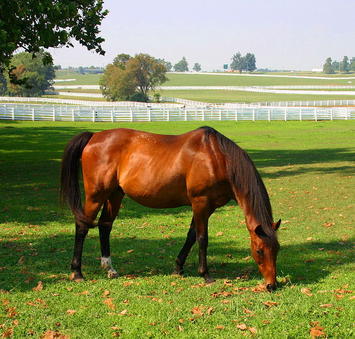
I grew up in the Louisville metro area (Southern Indiana), but somehow never managed to visit Lexington, Kentucky, which is only about 70 miles down the road.
A grant from the Knight Foundation gave me the opportunity to correct that oversight and write an article about Lexington. I’ll admit to a certain selfishness in pitching that idea. I wanted to learn more about Lexington and finally get the chance to visit the city.
Fortunately I was able to get that visit in pre-pandemic. Lisa Adkins, President of the Bluegrass Foundation, even graciously gave me a tour.
My piece has now been published in City Journal under the title “Bluegrass, Bourbon, and Basketball.” Here are some excerpts:
Lexington’s three major claims to fame have long-standing histories in the region. Bourbon is a local industry. While there’s no law requiring whiskey labeled “bourbon” to be made in Kentucky, most of it is, with distilleries dotting the landscape between Lexington and Louisville. The region sits on a bed of Ordovician limestone, which produces a mineral-rich water supply low in iron, ideal for whiskey-making. Exclusive limited-edition bourbons now command high prices, and Kentucky’s Bourbon Trail is a major tourist draw. Some people claim that bourbon is named after Bourbon County, immediately adjacent to Lexington’s Fayette County in the Bluegrass region, but the actual etymology is obscure. What is certain is that whiskey has been distilled in Kentucky, particularly around Lexington, for a long time.
…
Whatever the reasons, Lexington and surrounds became the home of hundreds of horse farms. Not only are they extremely productive economically in producing champion Thoroughbreds (the name of an actual breed of horse, not just a term referring to excellence or purity of breeding); the farms are stunningly beautiful. The byways around Lexington, with their signature white or black wooden fencing, stone walls, and impeccably designed and maintained buildings, are not just locally but nationally significant as a great American landscape. Roads with stone fencing bring to mind Ireland, perhaps in part because Irish laborers built some of the first such roads.
Lexington’s horse industry today is a global powerhouse. Horse racing is known as the “sport of kings,” and it takes mega-wealth to compete in it. Unsurprisingly, people like Sheikh Mohammed bin Rashid al-Maktoum, ruler of Dubai, own farms there. Others come to Lexington for its Thoroughbred auctions, especially at Keeneland, the world’s largest auction house for Thoroughbreds and also home to an eponymous racetrack. Though Louisville’s Churchill Downs, with its twin spires, is more famous, Keeneland, in an immaculate pastoral setting, is more beautiful. Traditionally, the horse farms were skeptical of visitors; today, they’re increasingly opening themselves up, becoming a bona fide tourist attraction.
…
The city’s urban-planning innovations have been quieter. City-county mergers are almost always contentious. Lexington’s took place in 1972, and the chairman of the committee drafting a proposed charter for the combined city-county was University of Kentucky political scientist W. E. Lyons, who observed in a subsequent book that conditions were nearly ideal for a merger to succeed in Lexington. Lexington was the only incorporated community in Fayette County, and the merger thus involved only two units of government; there were no suburbs and no townships, as in the Midwest; and the local schools were already consolidated at the county level, following the common pattern of the South. These conditions avoided problems plaguing other communities, where independent suburbs could act as strong forces against mergers and necessitate exemptions to ensure passage.
Read the rest of this piece at aaronrenn.substack.com
Aaron M. Renn is an opinion-leading urban analyst, consultant, speaker and writer on a mission to help America’s cities and people thrive and find real success in the 21st century. He focuses on urban, economic development and infrastructure policy in the greater American Midwest. He also regularly contributes to and is cited by national and global media outlets, and his work has appeared in many publications, including the The Guardian, The New York Times and The Washington Post.
Photo credit: Wes Blevins via Wikimedia under CC 2.5 license.












